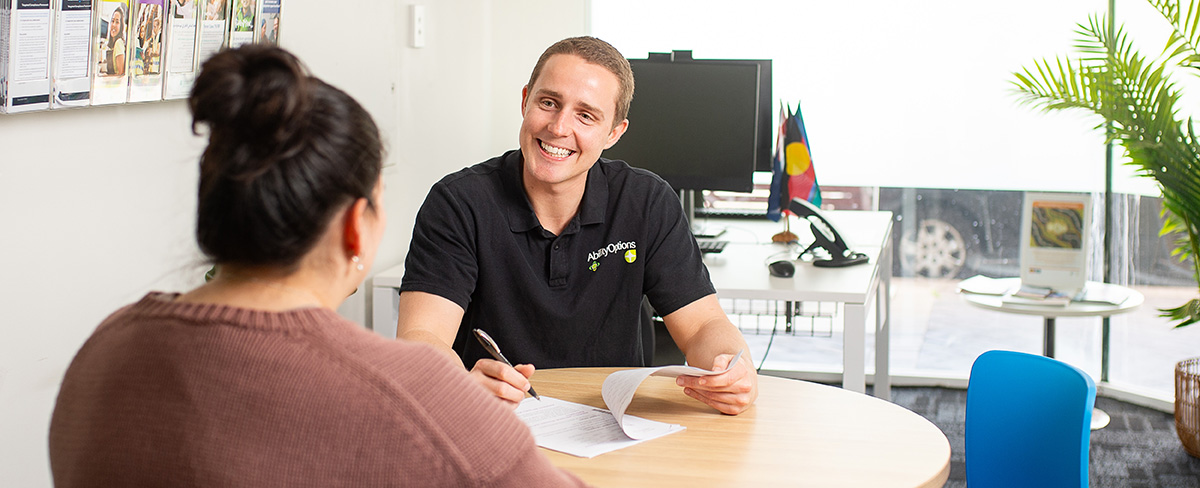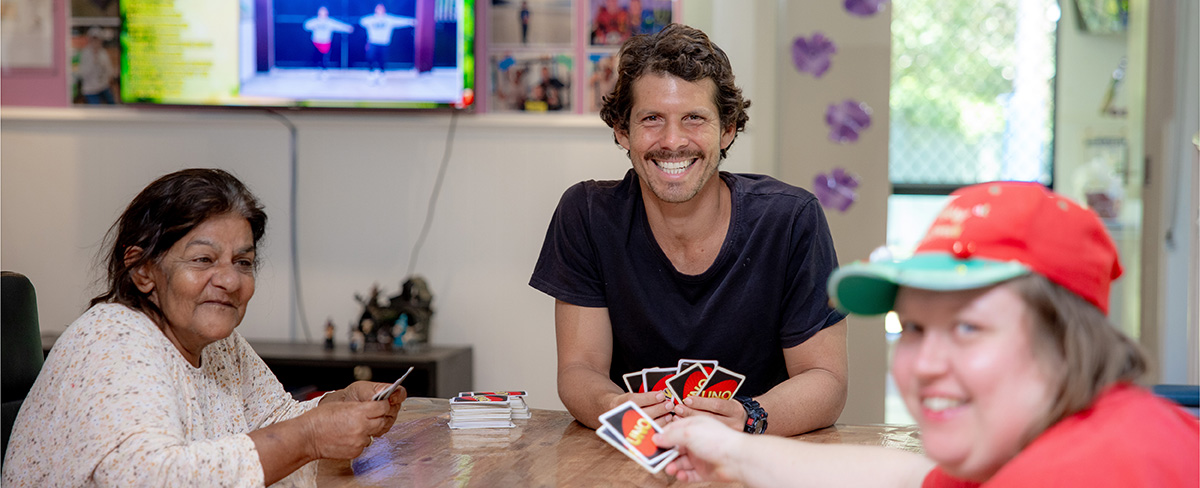At Ability Options we offer therapy services to suit all abilities and aspirations. Our person-centric approach helps participants and their families to identify goals and work towards achieving them.
Providing services to all ages, we tailor therapies to best suit the needs of our participants and their support networks. From Occupational Therapy to Behavioural Therapy, we recognise the importance of delivering quality and support as a team.
We match our therapists to participants, families and carers to ensure you receive the best care possible, developing therapy goals that align with the unique abilities and aspirations of our participants. Together, we create a path towards meaningful and achievable goals, fostering growth, confidence and wellbeing.
Occupational Therapy
Ability Options comprehensive therapy services are provided through NDIS funding, fee for service or other types of funding as appropriate. Occupational therapy enables our participants to engage in meaningful activities. These activities can include self-care and care of others, working, volunteering, schooling, participating in hobbies, interests and social events.
We offer a personalised approach to:
- Develop goals with participants and their support networks,
- Provide support and strategies to assist in goal attainment
- Improve functional capacity and abilities
- Renew confidence
- Enhance quality of life
- Celebrate progress and milestones together
Some of our OT services include:
- Functional assessments to determine current level of input, strengths and areas for improvement and identification of any development gaps that may need to be addressed.
- Development of daily and community living skills as well as work ready skills
- NDIS Accommodation Assessments. Complete Individualised Living Options (ILO), Supported Independent Living (SIL) and Specialist Disability Accommodation (SDA) assessments
- Help you to access all types of low cost to complex assistive technologies
- Home modification assessment and support
- Complex manual handling assessment and training
Behavioural Therapy
Behavioural therapy offers a guiding light for individuals navigating the complexities of their disability and well-being. At our core, we believe in the transformative power of understanding behaviours, thoughts, and emotions to foster lasting positive change.
Our behavioural therapy services extend beyond symptom management, providing a safe and supportive place for individuals, their family and support networks to explore, understand and address the root causes of challenging behaviours.
Our holistic approach will help you:
- Develop coping strategies
- Build healthier patterns of thinking and behaving
- Cultivate mindfulness
- Enhance self-awareness
- Improve resilience
- Unlock your inner potential
Therapy Assistants
To ensure you get the most value from your NDIS plan and our services, we employ dedicated and highly trained Therapy Assistants to work directly alongside our Therapists to provide tailor-made therapies for you and your family.
Our Therapy Assistants play a pivotal role in supporting individuals with disabilities.
Our Therapy Assistants can:
- Provide direct assistance during therapy sessions
- Implement tailored therapeutic interventions
- Foster an environment of growth and development
- Empower participants to achieve their goals
- Maximise the potential of your NDIS therapeutic supports
With a blend of empathy and skill, our Therapy Assistants work closely with our qualified Therapists to implement therapy plans and facilitate sessions tailored to the unique needs of each participant.
Locations of our Therapy Services
Our services are currently available across the NSW Mid North Coast including:
- Coffs Harbour
- Nambucca Heads
- Kempsey
- Grafton
Our Therapy team provide these supports to individuals through both face-to-face and online (telehealth) sessions every day of the week. Where necessary, the team also provide home visits for people using OT services. Find out which option best suits you.






